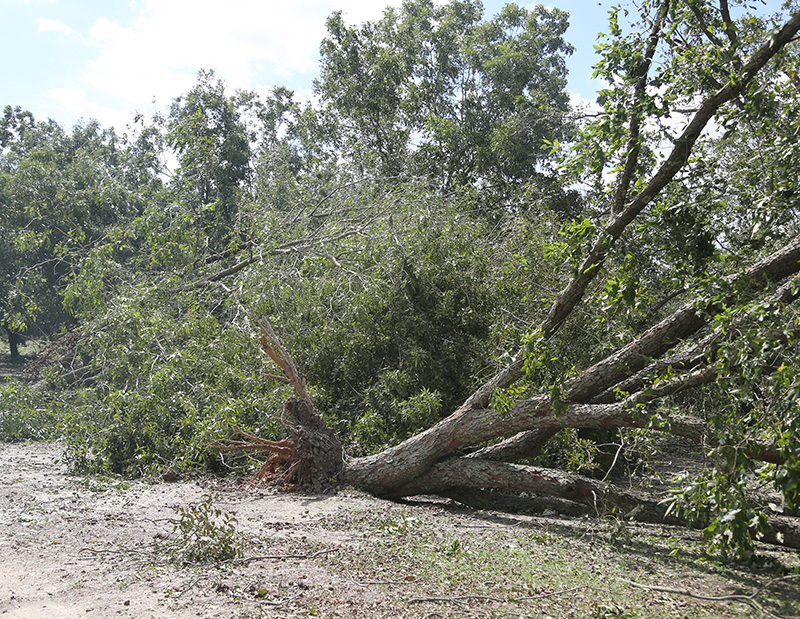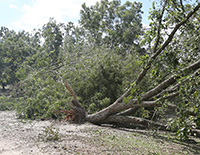Nearly a year after thousands of trees were destroyed by Hurricane Michael, Georgia pecan producers are reporting the dieback of pecan branches and leaf burning in trees that survived the October 2018 storm, according to Lenny Wells, University of Georgia Cooperative Extension pecan specialist.
The conditions, which are occurring in trees ranging from 2 to 15 years old, are not uncommon following storms that feature high winds, Wells said, attributing the problems to delayed hurricane damage.
“The trees got knocked around so much in that storm, even if it didn’t blow them down, it shook them around enough that it broke some of those roots underground and they haven’t been able to regrow enough roots yet to support the growth that the tree is trying to make,” Wells said.
Now that the temperatures have risen and the water demand has gone up, those trees are basically “in shock,” Wells said, and don’t have the roots they need to support them.
Wells says growers whose trees are showing these symptoms need to improve the root to shoot ratio and keep the roots watered.
“Growers need to cut some of the tree back and try to get the top of the tree back in line with what the roots can support,” he said. “The more severe the dieback, the more you need to cut the tree back. The worst trees may need to be cut back by half if the cambium is still green under the bark.”
Wells has seen similar symptoms in older trees that were pushed down by high winds but stood back up and righted after the storm by farmers. When the trees were erected, the roots were broken on the other side of the tree. These trees had enough root to survive initially, but the combination of intense summer heat and high water demand led to their demise, he said.
Scab disease
Wells has also fielded his share of calls regarding scab, a fungal disease that infects the leaves or nuts of pecan trees. If it hits early enough, scab can cause the pecan nuts to blacken and fall from the tree.
After a late dry spell in May, Georgia has received adequate rainfall in June and July, which has increased instances of scab disease in some orchards.
“It’s pretty rough so far this year. We’re seeing it on ‘Desirable’ and ‘Pawnee’. We’re starting to see it on some varieties we haven’t seen as much in years past, like ‘Stuart’,” Wells said. “The rain has certainly given us a lot of disease pressure and we’re at the point in the season where, if growers do have a crop, they can’t let up at all on those varieties that are susceptible.”
Wells recommends growers space their spray treatments 10 days apart.
For up-to-date information about Georgia’s pecan industry, see site.extension.uga.edu/pecan.








